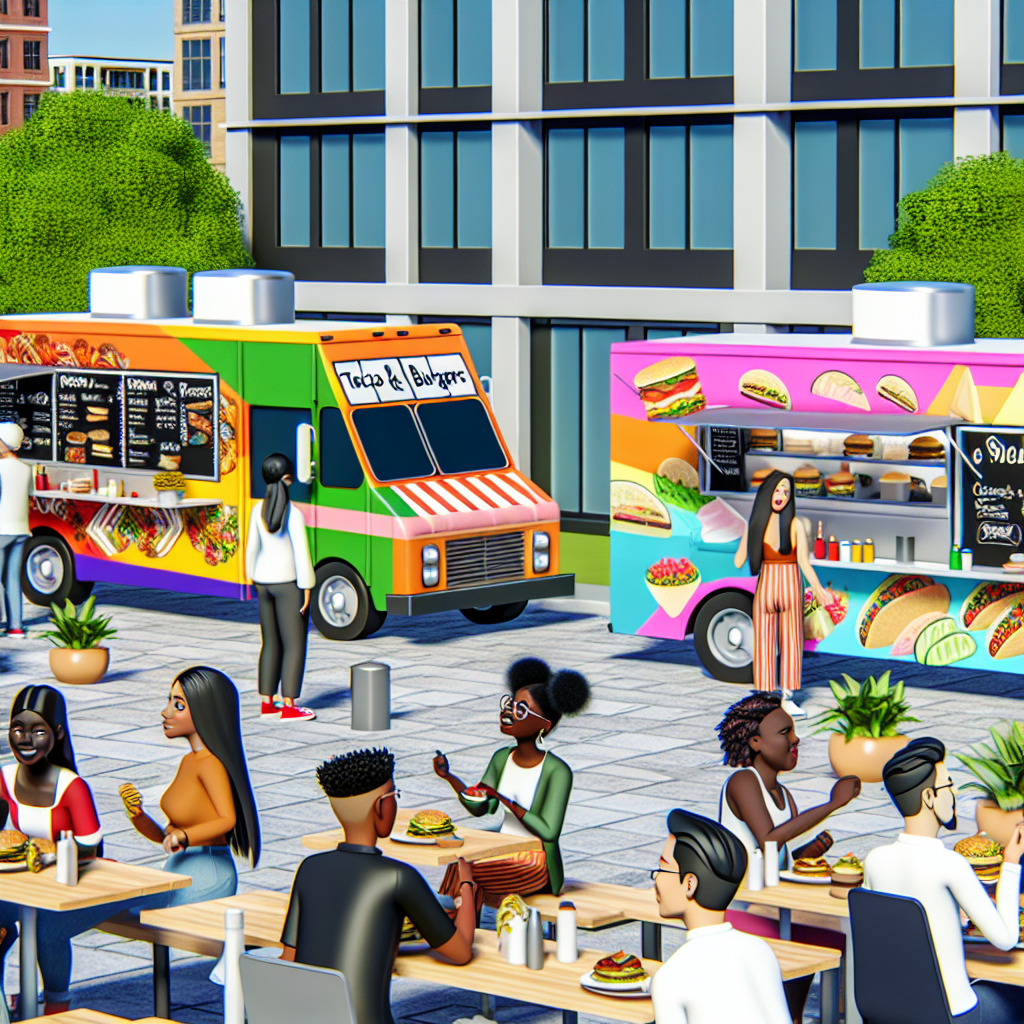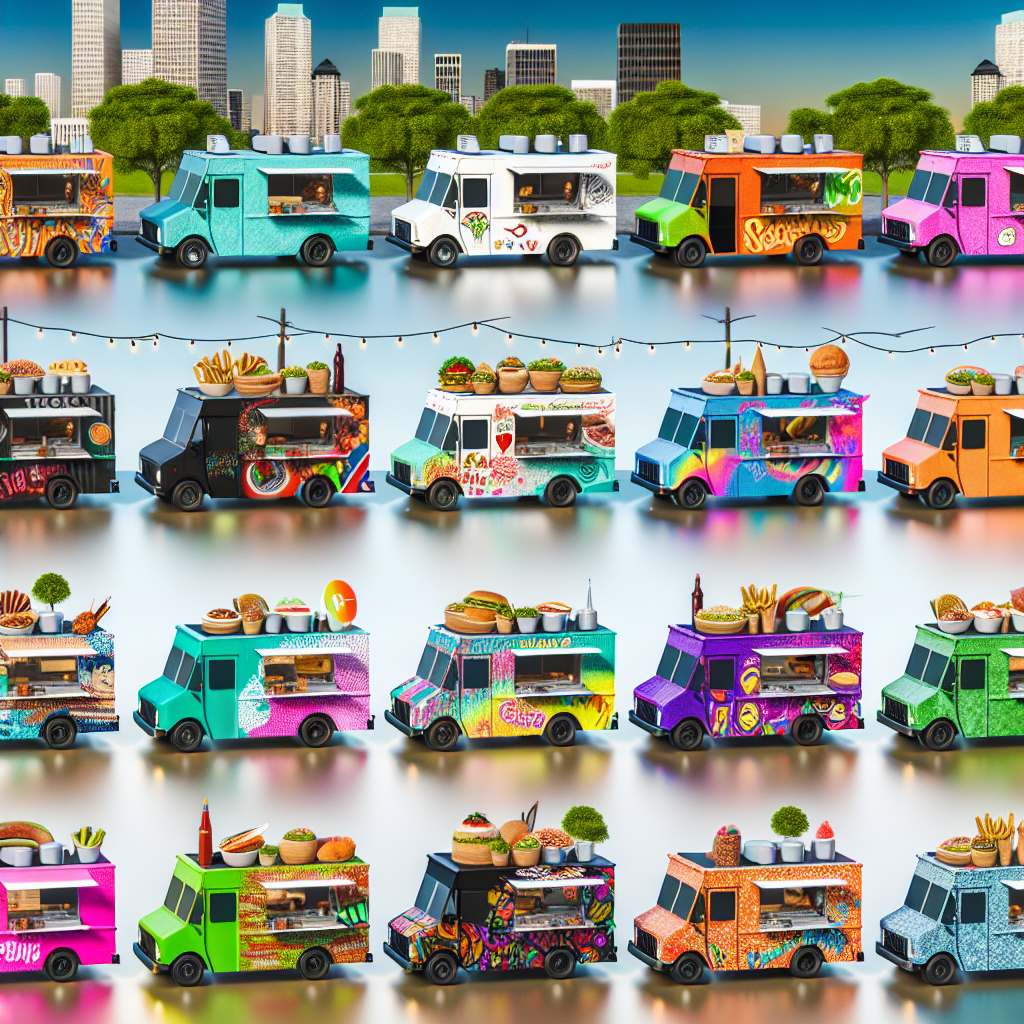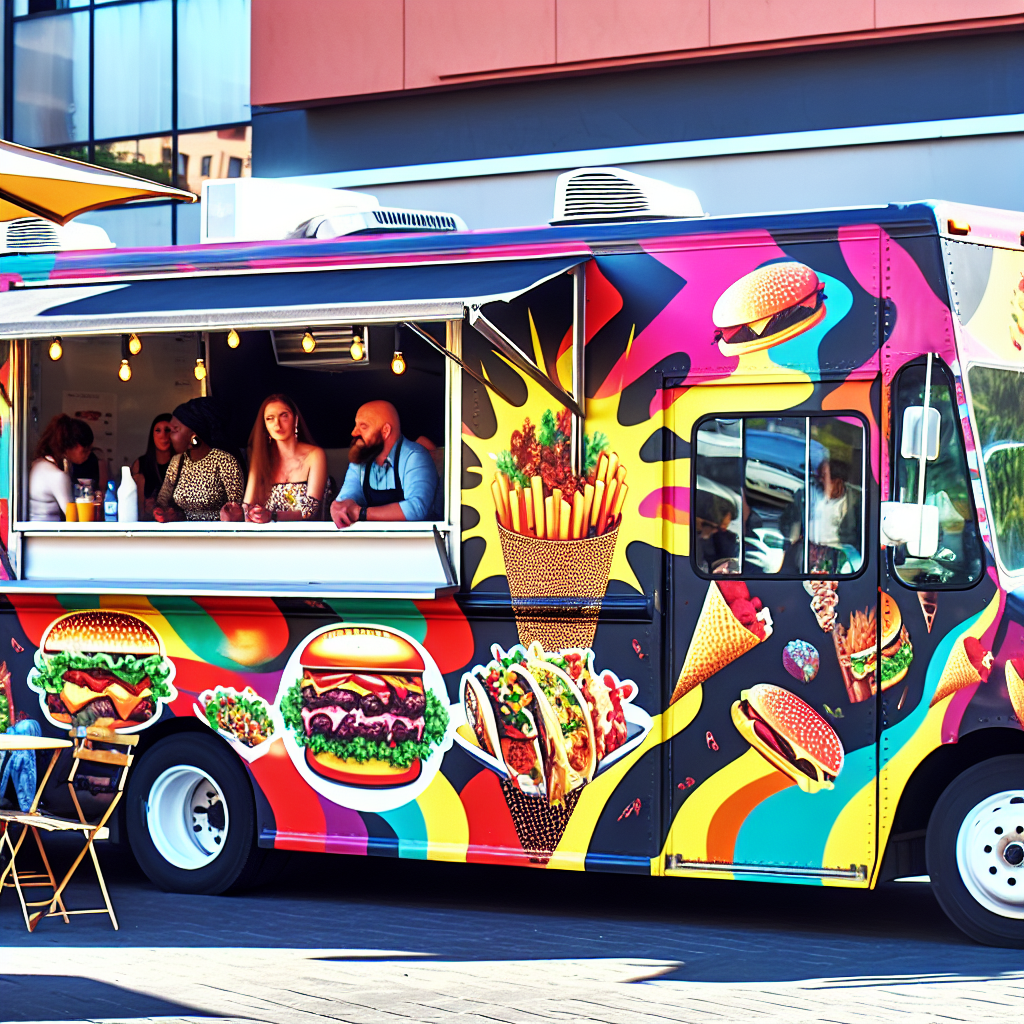As urban areas pulse with life, the food truck industry captivates food lovers with a diverse range of culinary delights. Food trucks have changed the dining experience, providing on-the-go meals that are often more convenient and unique than traditional restaurants. However, with this growing popularity comes a challenge for aspiring food truck entrepreneurs: choosing the right food truck model. Fostering a comprehensive food truck business plan includes having the right food truck equipment, tailored to various cuisines, space requirements, and local regulations.
From food trailers to cargo vans, the right vehicle and equipment are crucial for ensuring a successful mobile business launch and sustainability in a competitive market. In this article, we will explore essential considerations and popular food truck models to help you navigate this exciting journey and select the perfect vehicle for your culinary vision and equipment needs.
Food Truck Models
When selecting a vehicle for a food truck, it’s essential to consider factors such as space, maneuverability, fuel efficiency, and cost. Below is an overview of the Chevy P30, Freightliner MT45, Ford P700, RAM ProMaster, and Ford Transit models, highlighting their pros and cons for food truck owners, along with unique features and price ranges.
-
Chevy P30
- Pros:
- Spacious Interior: Offers ample space for extensive kitchen equipment and food preparation areas.
- Durability: Known for its robust build, making it a reliable choice for heavy-duty use.
- Availability: Widely available in the used market, providing cost-effective options for startups.
- Cons:
- Age: Production ceased in 1999, so only used models are available, which may require significant maintenance.
- Fuel Efficiency: Older models may have lower fuel efficiency compared to newer vehicles.
- Unique Features: The P30 chassis has been a popular choice for food trucks due to its adaptability and spacious design.
- Price Range: Used models can range from $20,000 to $50,000, depending on condition and modifications.
- Pros:
-
Freightliner MT45
- Pros:
- High Payload Capacity: Designed to handle heavy loads, suitable for extensive kitchen setups.
- Customization: Offers extensive customization options to meet specific business needs.
- Durability: Built with commercial-grade components for longevity.
- Cons:
- Cost: New models are priced higher due to premium build quality.
- Size: Larger size may pose challenges in urban settings with limited parking.
- Unique Features: Known for its spacious cargo area and strong chassis, making it ideal for food truck conversions.
- Price Range: New models start at over $100,000. Pre-owned models range between $35,000 and $70,000, depending on length, year, and mileage. Source
- Pros:
-
Ford P700
- Pros:
- Cost-Effective: Generally more affordable than some competitors, offering a balance of price and functionality.
- Versatility: Suitable for various food truck configurations due to its adaptable design.
- Cons:
- Limited Availability: May be less common in the used market compared to other models.
- Size Constraints: Depending on the model, interior space may be less than larger step vans.
- Unique Features: Built on the Ford F59 chassis, providing a reliable foundation for food truck conversions.
- Price Range: New models typically range from $58,000 to $69,000, depending on cargo length. Pre-owned models range between $30,000 and $55,000, depending on length, year, and mileage. Source
- Pros:
-
RAM ProMaster
- Pros:
- Front-Wheel Drive: Offers excellent maneuverability and traction, beneficial in various driving conditions.
- Boxy Shape: Maximizes interior space, simplifying conversions and allowing for efficient layouts.
- Affordability: Generally more budget-friendly, with new models starting around $38,000.
- Cons:
- Limited Engine Choices: Offers fewer engine options compared to some competitors.
- Front-Wheel Drive Limitations: May not be ideal for heavy loads or off-road conditions.
- Unique Features: Low cargo load floor facilitates easier loading and unloading.
- Price Range: New models range from approximately $44,960 to $62,585. Source Used models can be found for as low as $10,000, depending on age and condition. Source
- Pros:
-
Ford Transit
- Pros:
- All-Wheel Drive Option: Available in newer models, providing better handling under various conditions.
- Variety of Configurations: Offers multiple body styles and roof heights to suit different needs.
- Widespread Service Network: Easy maintenance with readily available parts.
- Cons:
- Price Point: Slightly more expensive than some competitors, especially with advanced features.
- Narrower Interior: Slightly narrower than some competitors, which may affect space utilization.
- Unique Features: Offers both gasoline and diesel engine options, catering to different fuel preferences.
- Price Range: New models start around $38,000. Source Fully loaded high-roof models can be as much as $15,000 more expensive than comparable ProMaster models. Source
- Pros:
In summary, the choice of vehicle for a food truck depends on specific business needs, budget, and operational considerations. Step vans like the Chevy P30, Freightliner MT45, and Ford P700 offer spacious interiors suitable for extensive menus, while cargo vans like the RAM ProMaster and Ford Transit provide maneuverability and cost-effectiveness for smaller operations.
| Model Name | Cost Range | Size | Cargo Capacity | Ideal Menu Type |
|---|---|---|---|---|
| Chevy P30 | $20,000 – $50,000 | 20 ft+ | 200 – 500 ft | Extensive kitchen setups |
| Freightliner MT45 | $35,000 – $100,000+ | 20 ft+ | High payload | Extensive kitchen setups |
| Ford P700 | $30,000 – $69,000 | 20 ft | Moderate | Various food truck options |
| RAM ProMaster | $10,000 – $62,585 | 15 ft | Moderate | Sandwiches, burgers, etc. |
| Ford Transit | $38,000 – $53,000 | 18 ft | Moderate | Various food truck options |
This table summarizes the specifications, costs, and ideal menu types of popular food truck models. It is crucial for aspiring food truck owners to consider these factors when making their choice.
Food Truck Models Images
To enhance the visual appeal of our exploration of food truck models, here are images of some popular food truck models:
-
Chevy P30
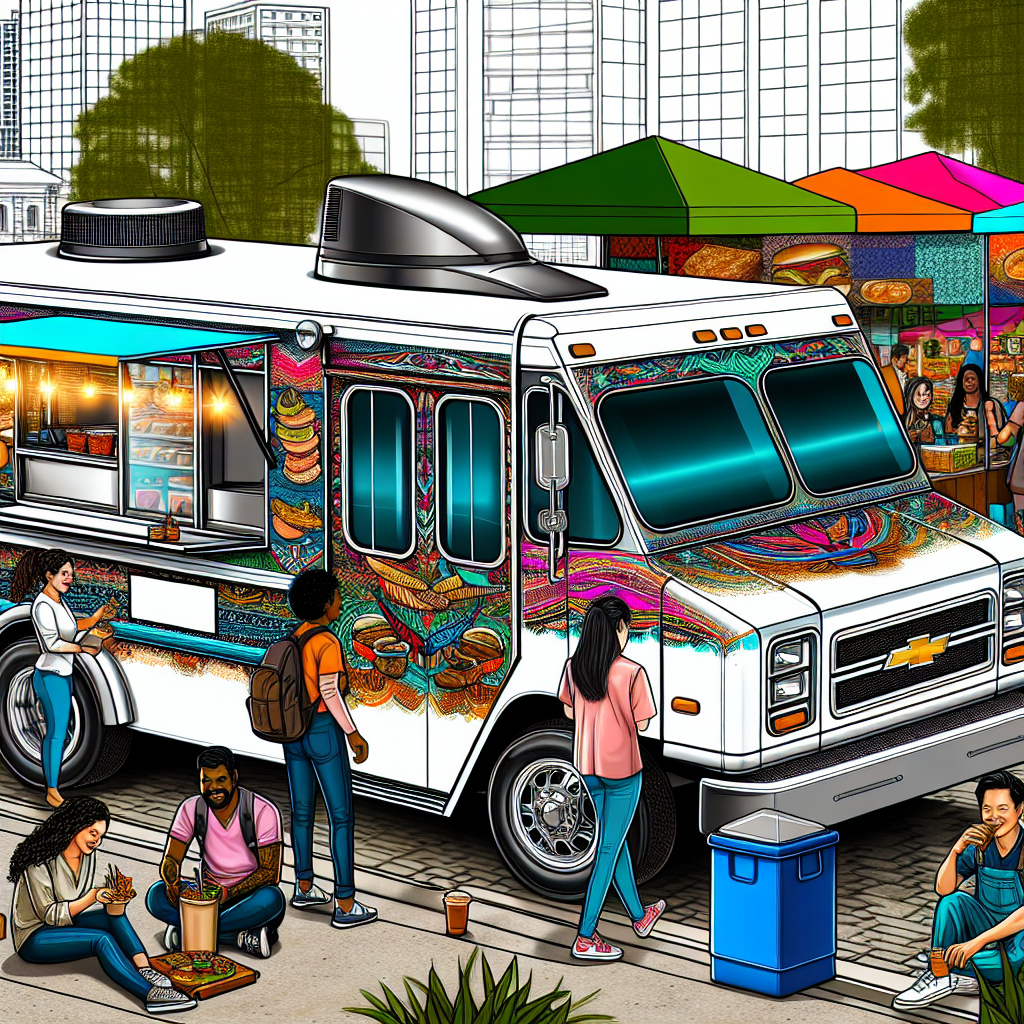
Chevy P30 food truck showcasing its spacious design in an urban setup. -
Freightliner MT45
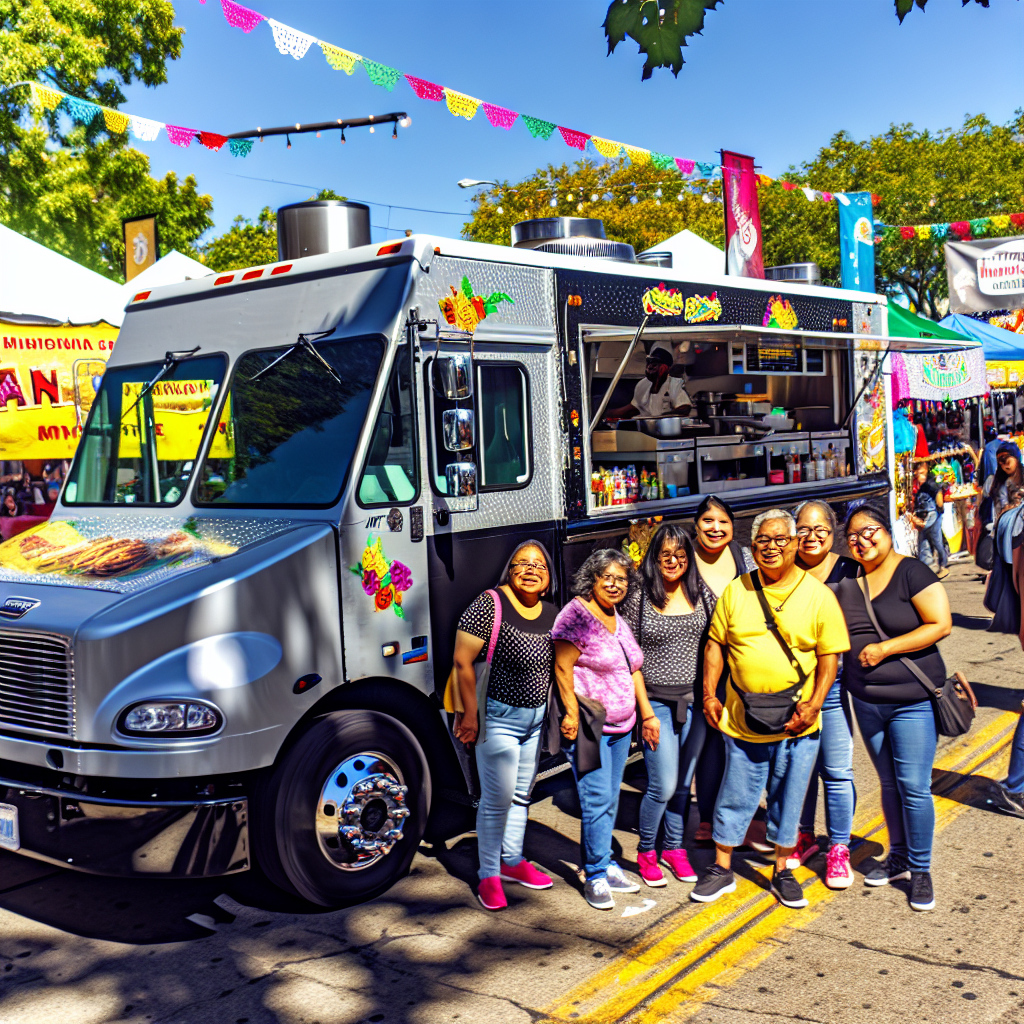
Freightliner MT45 food truck at a street fair, illustrating its robust structure. -
Ford P700
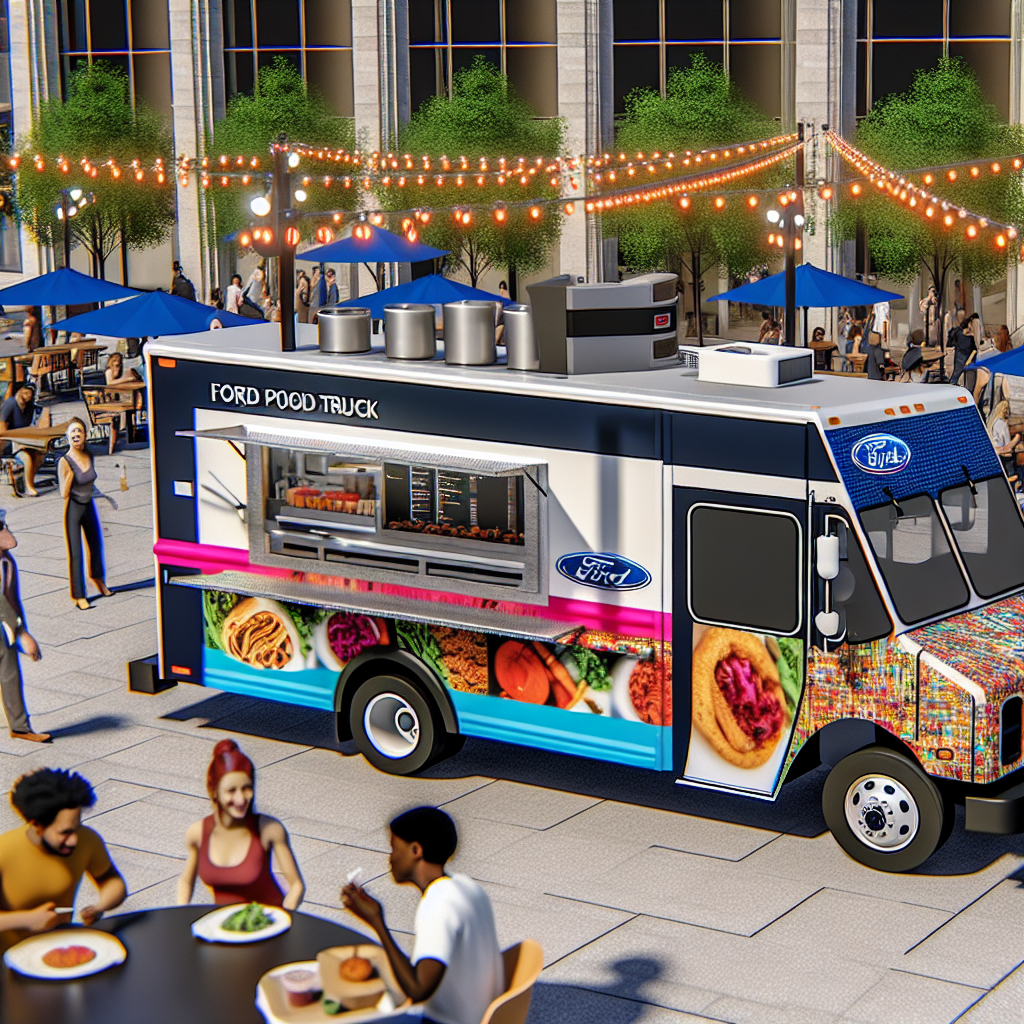
Ford P700 food truck displaying its versatility in a downtown atmosphere. -
RAM ProMaster
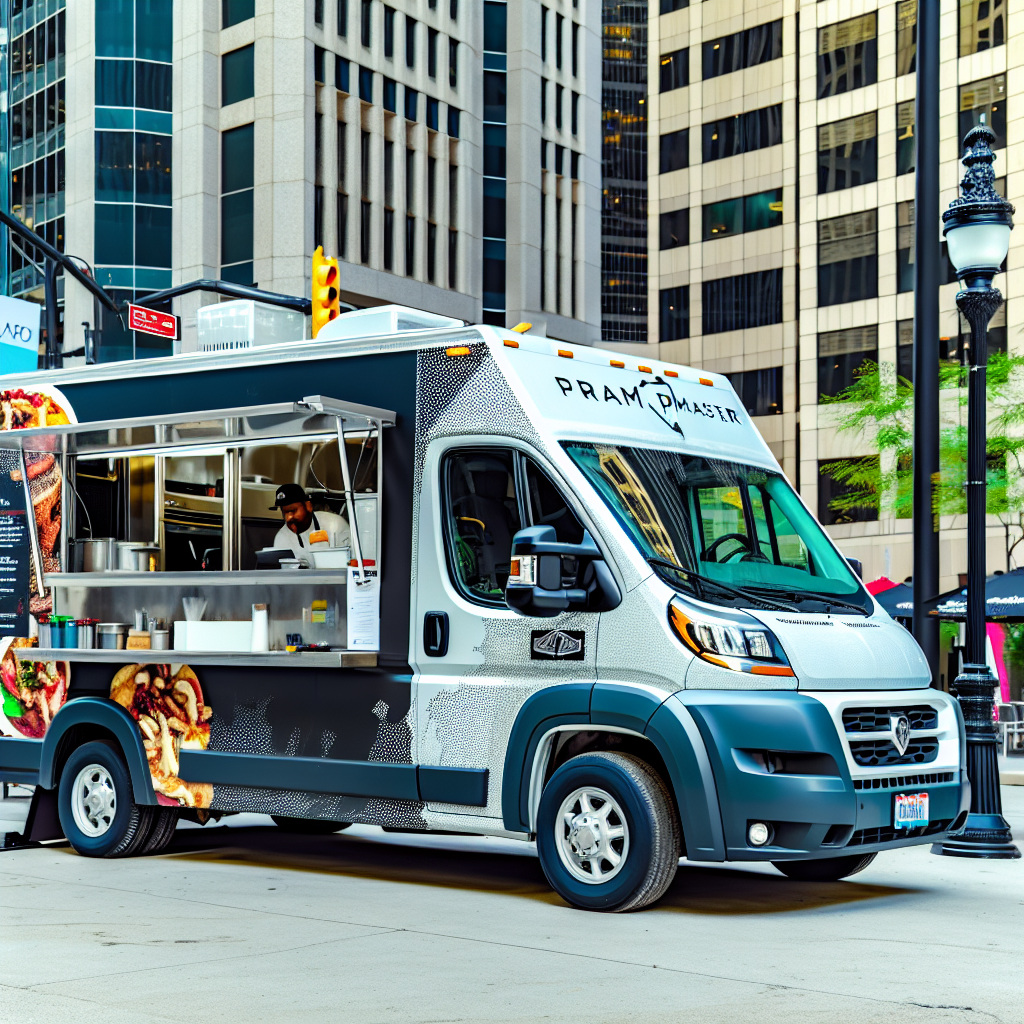
RAM ProMaster food truck parked in an urban setting, emphasizing its maneuverability. -
Ford Transit
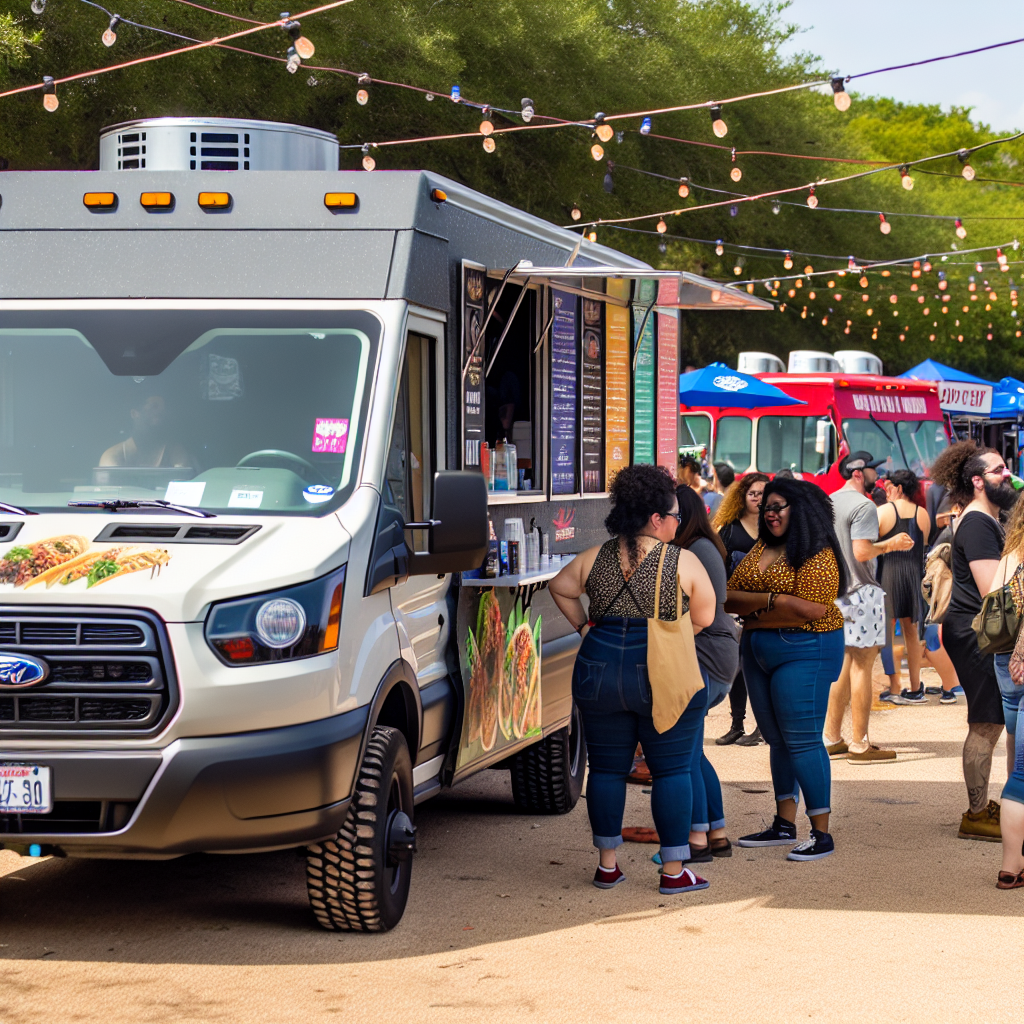
Ford Transit food truck at a food festival, showcasing its adaptability and customer engagement.
Choosing the Right Model Based on Menu
When selecting the right food truck model, the type of cuisine you plan to serve plays a pivotal role. Each culinary concept comes with its unique requirements regarding equipment, space, and layout. For instance, the quote, “Your menu determines the equipment you’ll have to have,” resonates strongly within this context. The intricacies of your menu will ultimately dictate the size and type of food truck you need to invest in.
If you’re envisioning a gourmet food truck that serves a diverse range of dishes, you may require a more spacious vehicle, like the Freightliner MT45 or Chevy P30. These models offer expansive interiors that can accommodate larger kitchens equipped with essential tools like grills, fryers, and refrigeration units. For example, a taco truck may need a griddle for cooking, while a coffee truck requires proper brewing equipment and a sink setup for sanitation standards.
Conversely, if your focus is on simpler fare, such as sandwiches or sweets, a smaller cargo van like the RAM ProMaster or Ford Transit may suffice. These models provide excellent maneuverability in tight urban settings and come with adaptable interior configurations that facilitate efficient workflows. However, when considering a smaller menu, it’s essential to account for storage space – particularly for perishable items and cooking supplies.
Additionally, aspects such as electrical power needs can come into play. Many food trucks are now utilizing electric fryers and coolers, which require robust electrical systems, further influencing the choice of vehicle.
Ultimately, the balance between your culinary vision and the practical capabilities of your food truck model will guide you in making the right decision. Prioritizing menu demands alongside logistical considerations is crucial for a successful food truck operation that meets both customer preferences and your business goals.

Location Considerations
When it comes to selecting the right food truck model, the location of your operations is paramount. Many factors associated with location can significantly influence your choice of vehicle and menu. Understanding these considerations helps ensure that your food truck business is both sustainable and successful.
First and foremost, parking space availability is crucial. If you anticipate tight parking areas with limited spots, you might need to scale down your menu. In constrained spaces, larger trucks with extensive setups may not fit, necessitating a shift towards smaller, more compact food trucks, like the RAM ProMaster, which can navigate downtown areas easily without sacrificing too much functionality.
Another critical factor is the potential customer volume in your chosen location. High-traffic areas like office complexes, festivals, or popular parks usually promise a larger customer base, which may justify the need for a larger food truck model with a diverse menu. Conversely, if your location is more remote or less frequented, consider a menu that requires less equipment, optimizing costs and space.
Local regulations also play a significant role. Different cities have varying laws concerning food trucks, including designated parking areas, operational times, and required permits. Depending on these regulations, you may find that certain models are better suited for your needs. For example, some jurisdictions might require a stricter adherence to size limits which would impact whether you opt for a larger step van or a more compact cargo van. For detailed information on food truck regulations across various locations, refer to credible sources such as Food Safety Modernization Act and the Safe Sidewalk Vending Act.
Lastly, competition in the area can influence your model selection. In places with numerous food trucks, you may need to differentiate your offerings, perhaps requiring a versatile truck that caters to diverse culinary needs or allows for unique preparation methods. Analyzing your competitors’ success can provide insight into effective food truck models and configurations that resonate with your target market.
In summary, location considerations encompass parking availability, potential customer volume, adherence to local regulations, and an understanding of your competition. By thoroughly analyzing these aspects, you can make an informed decision regarding the appropriate food truck model that aligns not only with your menu but also with the specific dynamics of your operating environment.
Vendor Preferences for Food Truck Models
For entrepreneurs eager to launch their food truck business, selecting the right vehicle is crucial. Insights gathered from food truck vendors indicate that preferences often align with practical operational needs and budget considerations. Here is a summary of popular models and key vendor insights:
-
Chevy P30
- Cost Range: Used models typically range from $20,000 to $50,000.
- Menu Type: Extensive kitchen setups, ideal for varied and complex menus.
- Vendor Insight: Vendors appreciate its spacious interior, although its age (production ceased in 1999) implies potential maintenance costs.
-
Freightliner MT45
- Cost Range: New models start above $100,000, with used options available from $35,000 to $70,000.
- Menu Type: Perfect for comprehensive, equipment-heavy offerings like gourmet meals.
- Vendor Insight: Valued for its durability and customization options, accommodating extensive kitchen equipment.
-
Ford P700
- Cost Range: New models range from $58,000 to $69,000, pre-owned options are available at $30,000 to $55,000.
- Menu Type: Versatile enough for various food truck configurations.
- Vendor Insight: Favored for its cost-effectiveness, although its availability in the used market is less than others.
-
RAM ProMaster
- Cost Range: New models range between $44,960 to $62,585; used variants can start as low as $10,000.
- Menu Type: Best for simpler menus like sandwiches or desserts.
- Vendor Insight: Vendors recommend it for its maneuverability in urban settings and adequate space for essential equipment, thanks to its boxy shape.
-
Ford Transit
- Cost Range: New models start around $38,000, with fully loaded versions up to $53,000 or more.
- Menu Type: Versatile, catering to various food truck concepts.
- Vendor Insight: Appreciated for its all-wheel drive option and ease of maintenance due to a wide service network.
In summary, the right model depends on your menu complexity, budgetary constraints, and operational logistics. Aspiring food truck operators should weigh these factors carefully to select a vehicle that aligns with their business vision and customer preferences, considering that the choice of vehicle can significantly impact their overall success in this competitive industry.
As of 2023, the U.S. food truck industry is flourishing with approximately 36,324 food trucks operating nationwide, representing a 9.9% increase from the previous year. The industry is estimated to employ around 40,547 individuals, contributing significantly to local economies. Furthermore, the market size of the food truck industry was valued at $1.48 billion in 2022 and is projected to grow to $2.04 billion by 2030, reflecting a compound annual growth rate (CAGR) of 6.4%. This growth can be attributed to rising consumer demand for convenient and diverse dining options.
Consumer engagement with food trucks is noteworthy, with around 80% of individuals dining at food trucks at least once monthly. Additionally, the demographic data shows that 43.4% of food truck patrons are aged between 25 and 44, indicating that the food truck scene particularly resonates with younger consumers. In summary, the food truck sector is not just surviving but thriving, demonstrating robust growth trends that suggest a positive outlook for current and prospective food truck operators.
Conclusion
Selecting the right food truck model is a pivotal step for aspiring entrepreneurs in this bustling industry. Throughout the article, we discussed various factors that play a crucial role in making this decision, including the specific requirements of your menu and the geographical locations where you plan to operate. From spacious models like the Chevy P30 and Freightliner MT45, suitable for complex culinary setups, to more compact and maneuverable options like the RAM ProMaster and Ford Transit for simpler fare, the choice you make will significantly impact your operation’s success.
Moreover, understanding local regulations, parking availability, and customer volume in your target areas can dictate which model suits your needs best. This informed approach not only helps in optimizing costs and logistics but also enhances your engagement with customers in a competitive market. As you embark on your food truck venture, remember to assess all aspects critically and select a model that aligns with your culinary vision and operational goals. Your choice will form the bedrock of your business as you strive to create memorable dining experiences for your customers.
Connecting Model Selection to Menu Needs
Having explored a variety of popular food truck models and their associated benefits and drawbacks, the next critical step is to align your vehicle choice with the culinary vision you have in mind. Every food truck model offers unique features that cater to particular types of menus—from gourmet fare requiring extensive equipment to more straightforward offerings that benefit from compact layouts. This nexus between model selection and menu planning underscores the importance of understanding your specific culinary needs; after all, a well-chosen food truck model can optimize operational efficiency and enhance the overall customer experience.
As you contemplate the ideal food truck model, consider the intricate dance between your menu and the equipment necessary to deliver your culinary concept effectively. Understanding how different trucks accommodate various preparations, storage, and service needs will ultimately allow you to choose a vehicle that not only aligns with your menu aspirations but also situates your business for success in the competitive food truck landscape.
